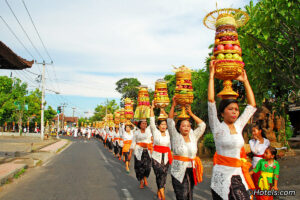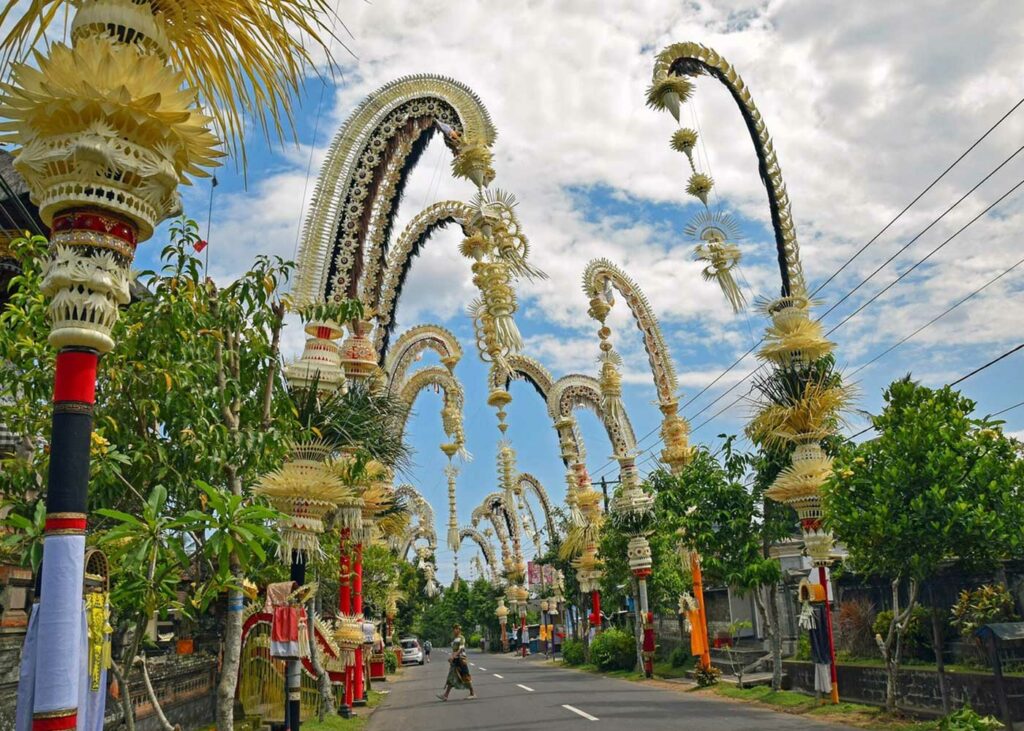The Galungan holidays in Bali can be compared to the celebration of Diwali (Deepavali) in Indian Hinduism.
The Galungan festival is a 10-days festival considered as the most important celebration in Bali and can be experienced twice a year. The festival represents the victory of Dharma (the light) over Adharma (darkness).
Meaning of Galungan
The darkness is represented by the ancestral spirit Sand Kala Tiga who is coming to earth three times to tempt humans with its darkness before the festival starts on the three days preceding the Galungan.
Balinese Hindu will go to the local temple and give offerings to the gods to protect them over darkness and celebrate the light. Hindus will aim to become better and get aware of their own ego and sins in order to dominate them and gain control over their inner power.
Balinese believe that their deceased and cremated ancestors are coming back on earth during the festival. Thus Balinese must be welcoming and hospitable throughout the whole festival to welcome their deaths. One of the main way to show their hospitality is with bamboo pools (penjor) of several meters high placed in front of the houses.
The end of the festival is the Kuningan day when the ancestors are returning. On that day, Balinese Hindu will offer yellowed rice in coconut leaves to wish farewell to their ancestors.
This special day takes its name from the word kuning which means yellow. The yellow rice signifies the human’s gratitude towards God for all the goodness, prosperity and health.
Balinese believe that Ida Sang Hyang Widhi (God) is blessing the whole word and giving prosperity to everyone for the year to come. It is common to celebrate Kuningan before noon when gods and goddess are believed to be returning to heaven.
The next Galungan celebration will take place in July 24th 2019.

